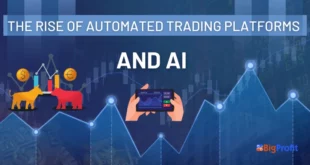Many traders believe mispriced markets exist and offer opportunities to achieve extraordinary returns, but to win against these markets requires sophisticated predictive models capable of handling vast data pools, mitigating human error, and increasing productivity.
Locating anomalies manually is time-consuming and laborious, while anomaly detection algorithms with machine learning can quickly identify signals and capture correlations in data that humans might miss. Unfortunately, however, getting up and running requires significant data resources as well as engineering talent.
Machine Learning
Machine learning is an approach to using data to develop algorithms for detecting anomalies. As it becomes an ever more vital tool in financial markets, machine learning helps uncover relationships and patterns that may otherwise go undetected by traditional linear instruments.
Anomalous detection can be challenging in large data sets, particularly with many disparate points and records to examine. Anomaly detection involves recognizing patterns within data and determining which points deviate from them – particularly at points when nothing seems unusual at that time – as this may signal either severe events or opportunities that should not be missed out on.
Recent studies by researchers have employed machine learning to detect market anomalies. One such study identified a small-firm effect in the stock market, suggesting prices do not fully reflect available public information. Another discovery suggests the EMH may be flawed and traders can generate abnormal returns by exploiting market inefficiencies.
Artificial Intelligence
AI can be an invaluable asset when it comes to discovering anomalies in large data sets. AI algorithms have the capacity to process massive amounts of information faster and more accurately than any human could, helping businesses spot small differences that have significant ramifications for market performance.
AI can uncover unexpected correlations between metrics. This can help marketers understand how different elements of a marketing campaign relate. For instance, if social media campaigns correlate to an increase in website traffic then perhaps more resources should be allocated towards such campaigns in future.
AI can also be used to detect suspicious patterns that point toward fraud or illegal activities, from increased website traffic or sales outside the normal holiday season. Anomalies can be identified using either point anomaly detection (identifying data points that differ significantly from others in a dataset) or contextual anomaly analysis, both methods which require in-depth analyses of context.
Big Data
As organizations increase their use of analytics, so does the need for large data sets. Unfortunately, such large volumes cannot fit within relational databases and require more advanced analytical tools in order to be utilized effectively.
Large datasets contain valuable information that can help businesses optimize operations, mitigate risks and create competitive advantages. But unlocking this value requires an in-depth knowledge of its structure, semantic differences and analytical tools capable of quickly processing it accurately.
Analyzing data about what your customers are watching, reading and listening will enable you to create more personalized content for them. Manufacturers can utilize production efficiency and quality measures data analysis in order to boost productivity; manufacturers can utilize manufacturing efficiency data analysis in order to increase quality output; manufacturers may utilize production quality measures data in order to boost productivity while financial institutions use the information to detect fraud as well as stay abreast of market trends; data analysis allows financial institutions to detect fraud while staying ahead of market trends; while financial services use it detect fraud as well as identify emerging technologies which can be integrated into products or services in order to drive innovation.
Data Science
Data Science utilizes cutting-edge tools and technologies to gain meaningful insight from raw data, applying statistical and computer science methods and techniques for collecting and analyzing it across e-commerce, business analytics, finance, medicine and healthcare industries as well as other disciplines.
Retail retailers use data science for fraud detection; customer lifetime value prediction; optimizing pricing and budget optimization; foretelling trends on social media, personalizing services, powering recommendation engines and analyzing customer sentiment data. Data scientists also assist online merchants improve marketing strategies by designing and overseeing campaigns.
Companies seeking to take advantage of emerging trends must identify them early; companies must recognize a potential trend when it is still an anomaly and act upon it immediately before competitors do. Doing so could give your firm a significant competitive edge.
 BigProfit Profit through Algo & Technical Trading
BigProfit Profit through Algo & Technical Trading




